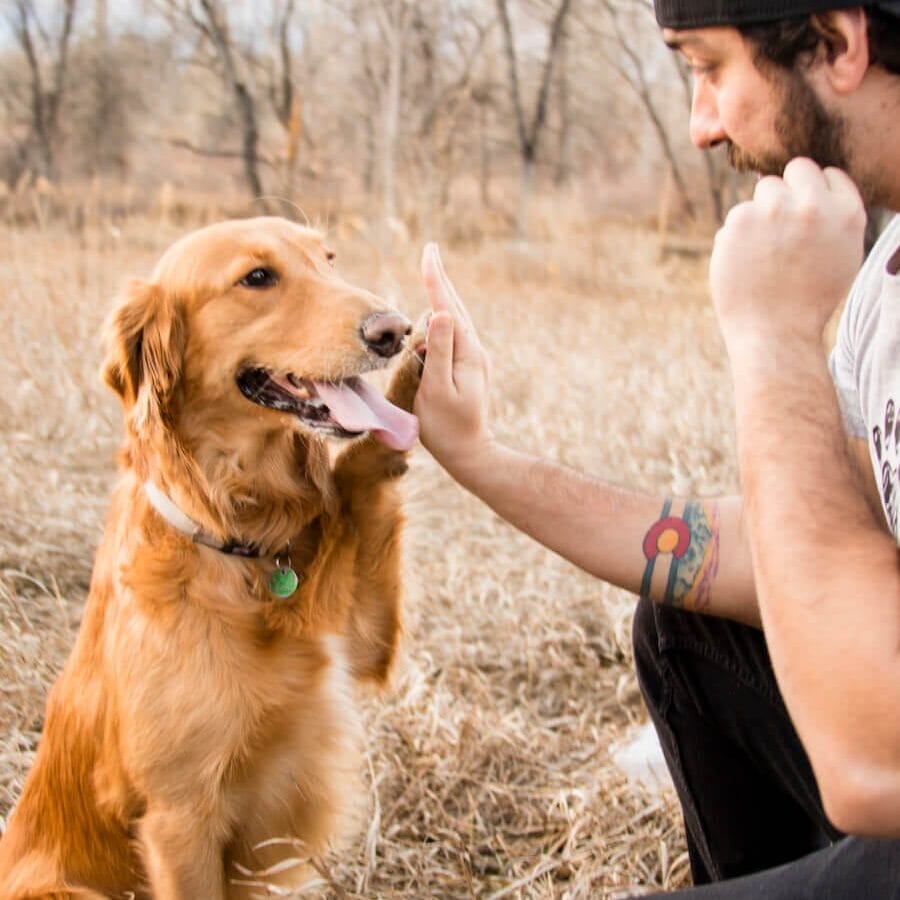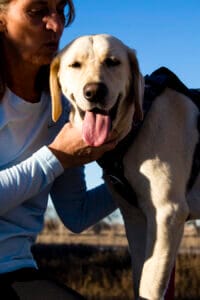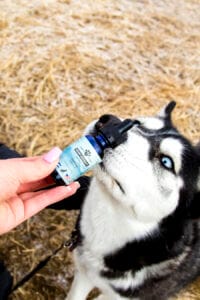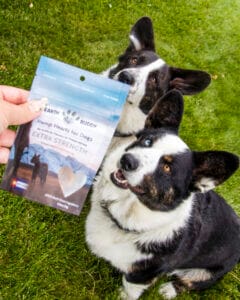The sight of a dog wagging its tail is one of the most universally recognized signals of canine behavior. But why do dogs wag their tails? Is it merely an expression of happiness, or is there more to this tail movement than meets the eye? Tail wagging, as it turns out, is a complex form of body language that can communicate a range of emotions and intentions to other dogs and pet owners alike.
Why Do Dogs Wag Their Tails?
Tail wagging serves as a primary mode of communication among dogs, conveying a variety of emotions and intentions. This behavior is not merely a sign of happiness but a complex form of communication reflecting the dog’s emotional state.
Dogs wag their tails more frequently compared to other species, which will tell you how important this behavior is for communication. The direction of the wagging, for example, can give clues about a dog’s mood: a right wagging tail (wagging to the right side) might mean they’re content, while wagging to the left side might indicate otherwise.
Checking Out The Dog’s Tail Positions and Movement
A dog’s emotional state is often reflected in the way they wag their tail. A calm and content dog might show their happiness through relaxed, gentle wags, whereas a more vigorous tail wagging could be a sign of excitement or anticipation.
Sometimes, dogs exhibit what’s commonly known as a “helicopter tail,” where the tail moves in circular motions, signaling extreme joy or excitement. On the other hand, aggression or heightened alertness is usually communicated through a vertical tail that’s held high, often accompanied by stiff, rapid movements, indicating a reaction to an unfamiliar dog or a new situation. Tucked tails communicate fear or submission in most cases.
Differences Among Breeds and Difficulty with Shorter Tails
A wagging tail means a variety of emotions, but the ability to express emotions through tail wagging can vary among breeds. Dogs with large expressive tails, like Golden Retrievers, can communicate more effectively than breeds with docked tails or other dogs with short tails, like Bulldogs or Greyhounds. However, even dogs with little to no tail find ways to express themselves, using other body language cues such as ears, eyes, and posture.
Looking at Overall Body Language With a Dog’s Tail Wag
Dogs not only use their tails, but also other body signals and vocalizations to express themselves. Contrary to popular belief, a wagging tail doesn’t always mean all is good in the world to your dog, but even if you’re looking at the direction their tail is wagging and what it looks like overall, you should still take a look at the rest of their body language.
Tail wagging is just one component of a dog’s communication repertoire. Dogs also use ear positioning, eye contact, vocalizations, and more to convey their feelings and intentions, whether positive feelings or negative feelings.
It’s important to note that if you have a young puppy, you may not be able to determine exactly how they’re feeling immediately. Your puppy’s emotions are still developing.
What Each Emotion Looks Like Based on Body Language
Besides their tail, it’s crucial to notice other signals your dog might be giving you, like the posture of their ears, the expression in their eyes, and the position of their body. Here’s what you need to know:
Posture
The way your dog is standing can tell a lot about how they’re feeling. If you see a dog that is hunched over cowering close to the ground, they may be fearful. This is often their attempt to appear smaller than they actually are so they’re not seen as a threat. You may even notice them roll onto their back following this form of body language to show even more submission.
If they’re leaning forward, they may be attempting to get closer to something of interest. Alternatively, this could mean they’re showing an offensive posture to warn other animals or people to stay back. The offensive body posture is often accompanied by a twitching tail that is held high in the air. This is a dog’s attempt to look larger and more dangerous.
Then, there’s the play stance. This is the iconic depiction of dogs with their chest on the ground and their butt in the air. It’s quite adorable and is used to initiate play with people or pets.
Raised Hackles
If a dog professional, or even a dog lover, says your dog has “raised hackles,” this means the fur on their back is standing up. This is known as piloerection which will raise the fur from the shoulders to their tail. It can be comparable to goosebumps, when piloerection causes the hair on your arms to stand up and the “bumps” on your arm.
Most of the time, people may think piloerection means a dog is angry or upset, but it may also mean they’re feeling overly excited or have extreme interest in something. Combine this with other body language cues to determine how your dog is feeling.
A Dog’s Eyes
Your dog’s facial expression could give it all away and a big part of that involves the eyes. Your dog’s eyes, like our own, can share how they’re feeling. Calm dogs will have soft eyes with relaxed eyelids. They may even look like they’re squinting their eyes when they’re calm and content.
Completely the opposite, a hard stare with wide open eyes could mean a dog sees something as a threat. They may be resource guarding either their food, toys, or perhaps even their pet parent. This is especially true if they continue to stare for a long period of time without looking away.
Once they do look away, this means they’re attempting to calm down a situation. Avoiding eye contact means they’re showing submission. In simpler terms, it’s their white flag surrendering and saying “we don’t need to fight about this.”
Then, there’s the incredibly dangerous look known as “whale eye.” Whale eye is just as it sounds; it’s when a dog looks at you from the side with the whites of their eyes showing. Dogs that are upset may look this way. It’s a red flag that means you should wait to approach.
A Dog’s Ears
Dog ears play a significant role in conveying their body language, serving as expressive tools that can indicate a wide range of emotions and responses. When a dog’s ears are perked up and forward, it often signifies alertness or curiosity, suggesting they’re engaged or interested in something happening around them.
Ears that are pulled back can denote fear, anxiety, or submission, indicating the dog is feeling threatened or wants to show appeasement. Flattened ears against the head might signal aggression or extreme fear, preparing for a potential threat.
Smiling Can Be Confusing
“Smiling” can be confusing, especially when someone isn’t very familiar with canine behavior and body language. When dogs smile, you can see their teeth, but it’s not the same as them showing their teeth when they’re trying to scare something or someone away. Instead, the smile is a relaxed, slow-breathing look. Their face appears to be relaxed rather than scrunched as it would be if they were angry.
Why Your Canine’s Body Language is Important to Understand Along With Their Tail Wags
By paying close attention to your dog’s body language, you can gain insight into how they’re feeling and what they’re “saying” to you and others. Dogs communicate through their physical gestures and vocalizations, with the wag of their tails being one of the main parts of their body to observe. Without vocalizations, understanding your dog’s language can help you better care for them and respond effectively to how they’re feeling.
You’ll know if they’re feeling under the weather, uncomfortable with a new person or pet, or even just looking for a bit of extra attention. By understanding how they’re feeling, you’ll be able to strengthen the bond you share with one another and remove that language barrier standing between the two of you and know exactly when you have a plain out happy dog.
Tail Wagging Across Differing Dog Breeds
Certain dog breeds, such as greyhounds, tend to exhibit specific tail wagging tendencies, showcasing variations in communication styles among different dog breeds. This can be partly attributed to breed-specific behavior traits and physical characteristics. The impact of tail docking on communication signals is also significant, as it may alter the way dogs convey emotions and intentions.
For example, in breeds with docked tails, owners and other dogs may need to rely more on other cues, including body posture or vocalizations, to interpret the dog’s emotional state and intentions. Fortunately, many dogs tend to be good at this, but more humans need to learn their dog’s language so they can support their relationship.
CBD Oil for Dogs to Help Maintain Calmness and Relaxed Dog Wags
Pet parents have found that CBD oil for dogs can help reduce the effects of normal environmental stress, potentially affecting tail movements associated with these emotions. While full spectrum hemp extract is not a direct influencer on why dogs wag their tails, it may help keep your pet calm and relaxed, supporting more tail wagging involving positive emotions.
Keep in mind that you should make sure to check the lab results, also known as the certificate of analysis with some companies, to find the best cbd for dogs. The best CBD for dogs will prove their claims with their results.
For further reading, we recommend:
- https://royalsocietypublishing.org/doi/10.1098/rsbl.2023.0407#:~:text=Tail%20wagging%20is%20also%20used,a%20requesting%20signal%20%5B40%5D
- https://www.ncbi.nlm.nih.gov/pmc/articles/PMC9356099/
- https://www.scientificamerican.com/article/why-do-dogs-wag-their-tail/
- https://www.smithsonianmag.com/smart-news/why-do-dogs-wag-their-tails-180983608/
- https://www.nationalgeographic.com/animals/article/left-or-right-tail-wags-elicit-different-emotional-responses-from-dogs
- https://oro.open.ac.uk/57936/1/08_11_18_ACD%20TW-CM-ORO.pdf
- https://www.ncbi.nlm.nih.gov/pmc/articles/PMC6326553/#:~:text=CBD%20was%20shown%20to%20be,mg%20in%20single%2Ddose%20studies.&text=Other%20studies%20suggest%20lower%20doses,100%20mg%2Fkg%20in%20rats
You Might Also Enjoy
Reactive dog barking may sound intimidating, but it’s important to differentiate it from dog aggression.…
Your dog’s skin is their largest organ making dog skin care a crucial part of…
Like us, our dogs, and other mammalian species, cats have an endocannabinoid system. This system…











